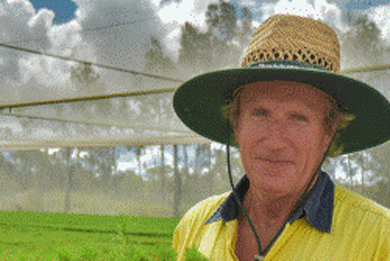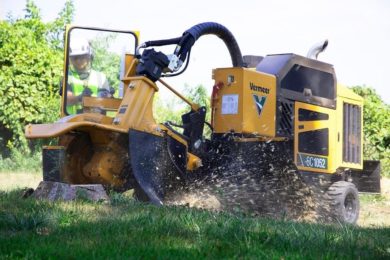Total forest, paper and packaging (FPP) deal values increased to $27.6 billion in 2007, up $1.9bn on 2006, according to PricewaterhouseCoopers’ Branching Out report.
Deal values were well up in the first quarter of 2008 reaching $11.8bn, although the outlook for the rest of this year is more uncertain.
North America’s share of deal activity remains dominant. Private equity has continued to play a key role in deals particularly in North America. New dealmakers have also emerged on the scene, such as New Zealand’s Rank Group. The FPP industry is at the heart of the drive towards sustainable development and we are seeing new investment trends reflecting this. Yet the main deal story is the lack of significant, and urgently needed, consolidation deals in Europe. FPP companies continue to operate in a challenging, and rapidly shifting, sector. Macro-economic factors have affected the industry, particularly increased fibre and transportation costs, soaring energy prices, lacklustre demand at best in North America and Europe and the impact of emerging markets on global competition. The weakness of the US dollar versus other key currencies such as the euro, the Brazilian real and the Canadian dollar have also had a substantial impact on the industry. Canadian players have been particularly hard hit, due to their dependence on the US market. The shift in currency ratios globally has played havoc with many FPP companies’ planning and supply chain configurations and is likely to have a noticeable influence on deal making going forward. The influence of private equity (PE) on the FPP industry remained strong in 2007 – over $10.4bn in deals, or around 38% of deal values included some PE participation. PE involvement slowed down in the first quarter of 2008, particularly in the pulp and paper sector, but some PE firms have substantial funds awaiting deployment. PE participation has fuelled much of the consolidation and restructuring which has taken place in FPP in North America in recent years but this remains subdued in Europe.
Clive Suckling, global forest, paper and packaging leader, PricewaterhouseCoopers, commented: “Total deal values increased in 2007, despite a lower average deal size, due to a greater number of deals. Looking ahead, the trend for the rest of 2008 is unclear. “On the one hand, developments in financial markets are making for a tougher deal-making environment – on the other, 2008 could still emerge as a record-breaking year if long-overdue consolidation in Europe takes place. Looking even further ahead, we are seeing emerging investment themes, particularly around sustainability, which continue to drive deal activity.” Timberland is a burgeoning asset class. In the past decade, many US industrial players (forest products producers) have sold forestland assets in order to improve their own financial performance. This sell-off triggered a massive upscaling of institutional investment in the US via Timber Investment Management Organisations (TIMOs) and Real Estate Investment Trusts (REITs) specialising in forestland property. TIMOs are privately owned forestland investment structures that have ballooned in size since 1990, moving from around $1bn to over US$25bn in assets under management by the end of 2007. US TIMOs are now looking to move further overseas and non-US investors are becoming interested in timberland investment, often seeing this asset class as a suitable medium for environmentally sustainable as well as profitable investment for well-balanced portfolios.
Timberland investment over the next few years will almost certainly drive substantial levels of transaction activity over a broad geographic range. There will be more institutional investment into forestland, as well as higher levels of trading of existing institutionally owned assets as portfolios are realigned. “Timber plus” investment strategies: As we look towards the future, the definition of commercial timber values will continue to expand beyond traditional sawlog and/or pulplog values to include the potential value of the wood as energy. The developing potential of forests as renewable energy and material sources is likely to drive future deals, as the full range of the possible spectrum of uses expands, from wood energy today to biofuels and value-added products in the future. A further set of opportunities is starting to arise from the environmental services (or ‘ecosystem services’) provided by forests. As time passes, awareness is increasing of the valuable role of trees and forests in carbon sequestration and hence in mitigating some of the effects of global climate change. Most notably the role of forests as a carbon sink could become a source of significant revenue – and ‘timber plus’ investment strategies are receiving growing interest.
Bio-energy: redefining the industry: Wood biomass is emerging as an important renewable energy source, creating competition on already strained fibre sourcing. Still, substantial opportunities for forest products companies are developing, these span from supplying or aggregating forest biomass, to producing wood-based energy (heat and power) to producing wood-based transport fuels and value added chemicals and other materials, as technology could make these commercially viable.
FPP companies will need supply chain partners such as oil and gas, or energy companies to exploit the opportunities. Deals in the (wood and agricultural) bio-energy area have started to pick up, although most transactions to date involve co-ventures and start ups. In 2007 global bio-energy deals increased around sevenfold to nearly $7bn in 2007, with deals concentrated in North America, followed by Asia-Pacific and Latin America. There will be more deals in the future and the forest products industry will feature. These emerging investment themes pose a challenge to established business models in the FPP industry.
They are drawing in new investors into the forestry and forest products value chain. However, where there is challenge there is opportunity provided established FPP companies can adjust their strategies. Suckling: “Global competition has fundamentally altered the competitive environment in the forest, paper and packaging industry in recent years and continues to do so. The ever stronger push for sustainability by customers, policymakers, regulators and also investors is now starting to impact strongly upon that environment and the deals outlook. “While the global credit crunch and uncertain economic outlook do pose challenges, there are some fundamental drivers for continued strong deal flow as the industry copes with key challenges. These include the need to close unprofitable capacity; cope with maturing markets and enter growing ones; secure a stable, cost effective fibre supply; and adjust to shifts in global currencies.”






